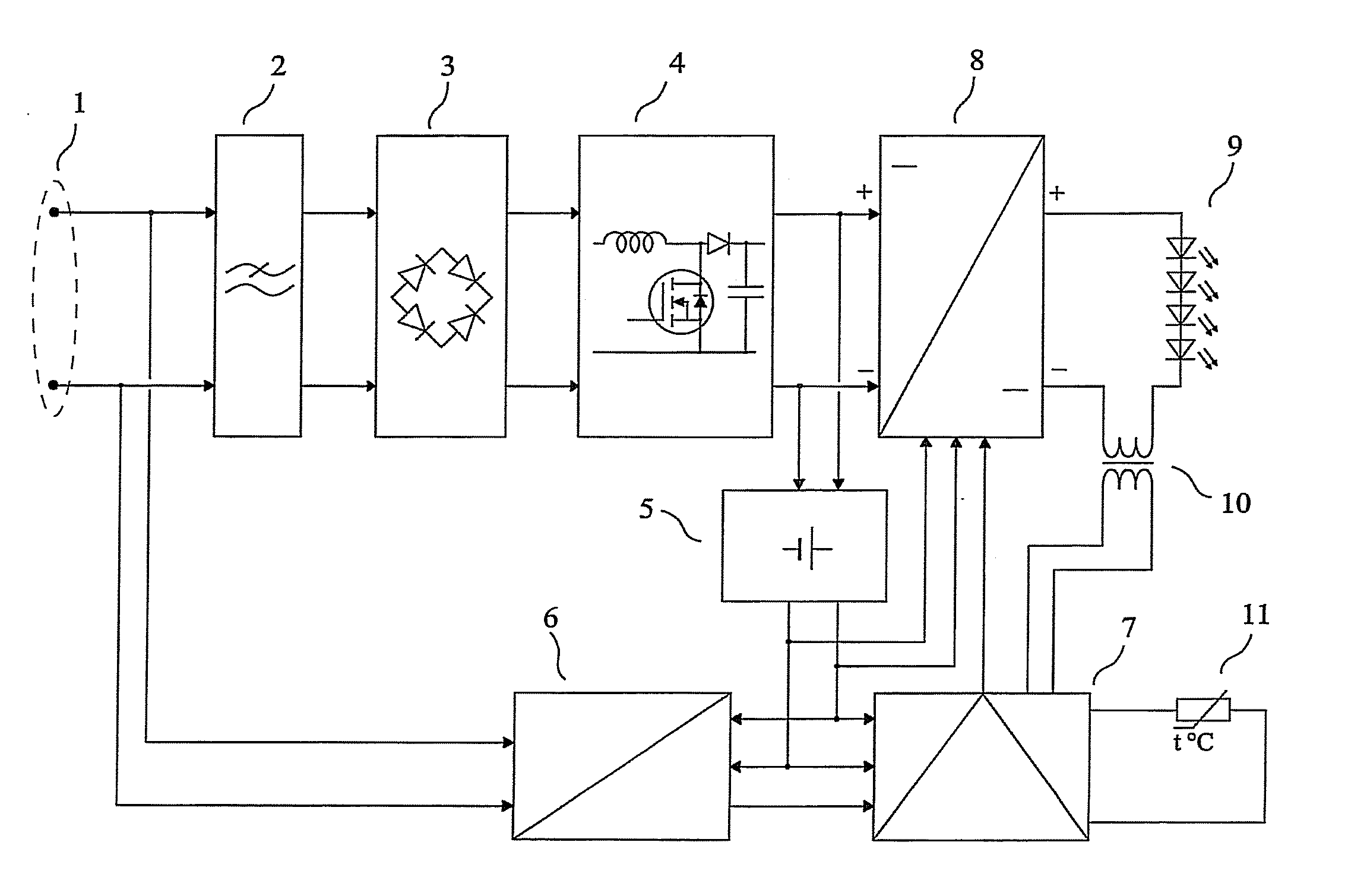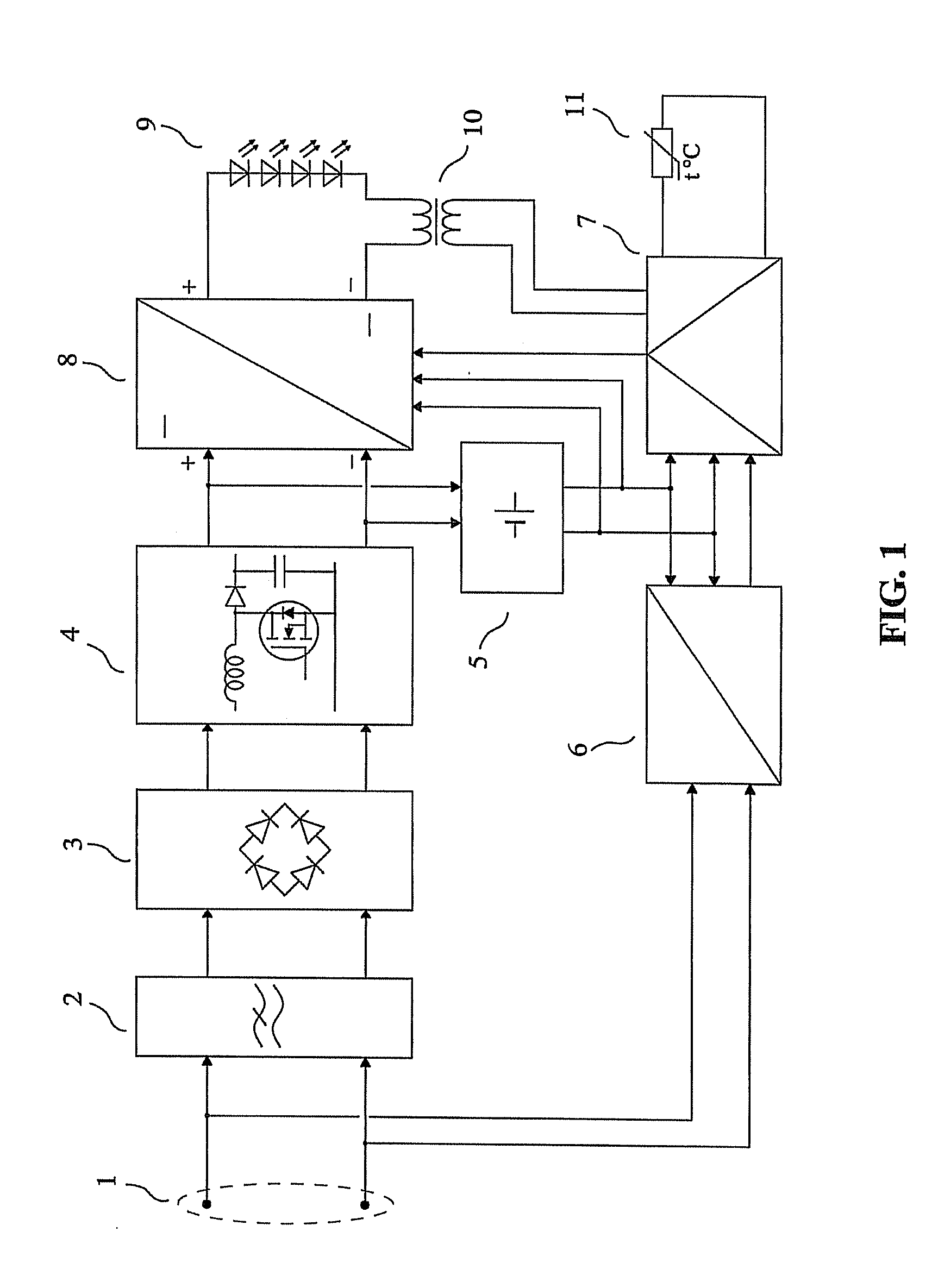Electroluminescent Emission Device for Optical Transmission in Free Space
a technology of optical transmission and emission device, applied in electromagnetic transmission, power distribution line transmission, close-range type systems, etc., can solve the problems of not being able to meet the requirements of all applications, the use of two separate wirings is obviously more expensive than a classical wiring for luminaires, and the difficulty in addressing the means of delivering the signals to be transmitted to the light-emitting diodes
- Summary
- Abstract
- Description
- Claims
- Application Information
AI Technical Summary
Benefits of technology
Problems solved by technology
Method used
Image
Examples
Embodiment Construction
[0008]The purpose of the invention is a transmitting device for free-space optical transmission which does not require a separate wiring for delivering its input signals, without the limitations of known methods and devices.
[0009]The invention is about a transmitting device for free-space optical transmission, comprising:
[0010]one or more light-emitting diodes used as light source for the optical transmission,
[0011]a receiving set for transmission via power distribution lines, capable of delivering “demodulated signals” at its output, the “demodulated signals” being obtained from a demodulation of signals appearing at the terminals allowing to power-feed the transmitting device,
[0012]a control device which modulates the light produced by the light-emitting diodes used as light source for the optical transmission, as a function of the “demodulated signals”.
[0013]The persons skilled in the art understand that, at a distance of the device of the invention large enough compared to the l...
PUM
 Login to View More
Login to View More Abstract
Description
Claims
Application Information
 Login to View More
Login to View More - R&D
- Intellectual Property
- Life Sciences
- Materials
- Tech Scout
- Unparalleled Data Quality
- Higher Quality Content
- 60% Fewer Hallucinations
Browse by: Latest US Patents, China's latest patents, Technical Efficacy Thesaurus, Application Domain, Technology Topic, Popular Technical Reports.
© 2025 PatSnap. All rights reserved.Legal|Privacy policy|Modern Slavery Act Transparency Statement|Sitemap|About US| Contact US: help@patsnap.com


